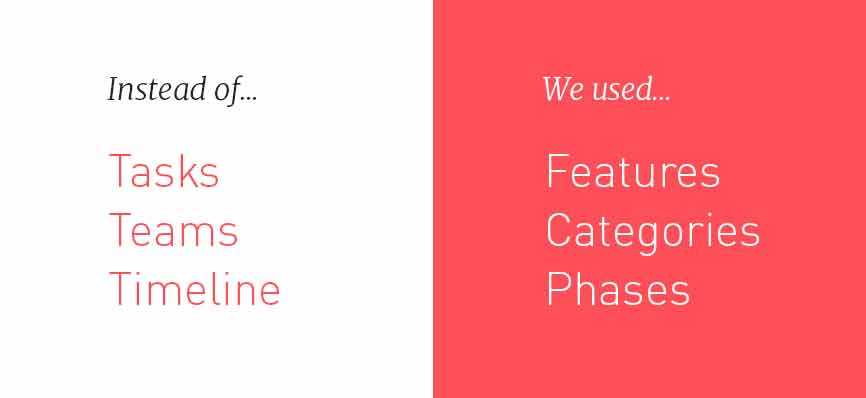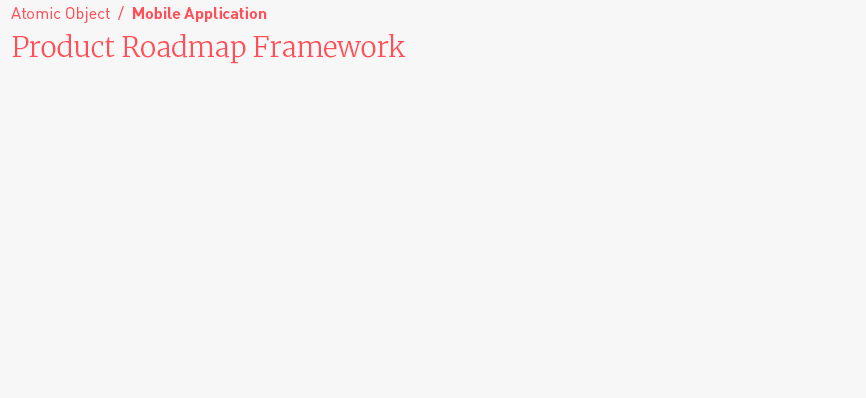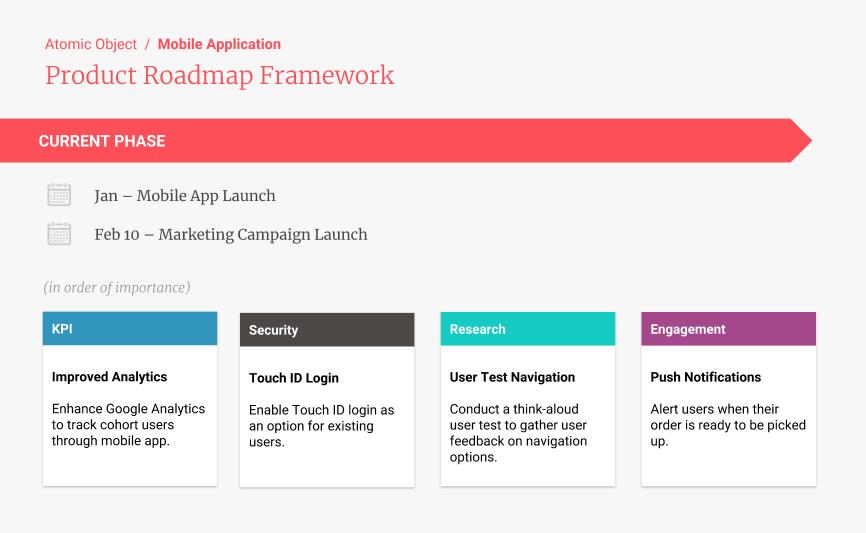Article summary
Product roadmaps have long been used to illustrate the direction of product development, including how much time the project will take to complete, what tasks need to be completed, and who is responsible for those tasks. In my experience, a roadmap has been the best tool to align the team and leadership around the same expectations.
During a recent mobile app project, our team wanted to align with leadership and needed a way to communicate our progress to other departments. A product roadmap would have been a perfect solution, but we knew that as soon as we had a draft, it would be out of date.
Since we were collaborating with other departments and external partners so often, we weren’t always in control of timing, and priorities shifted regularly. We needed a framework that had the direction and alignment capabilities of a product roadmap, but left out specific dates, tasks, and people so that it could stay relevant longer.
Zooming Out

In our project, we worked in two-week sprints where we met as a team to review the backlog, pull forward tasks for the next sprint, and assign tasks to team members. This level of detail made it possible for us to zoom out a little bit from a traditional product roadmap.
- Tasks → Features We used the features from our Pruning the Product Tree activity and put them in a line from highest to lowest priority, moving them around if they were dependent on other features.
- Teams → Categories We were able to show categories of the features in our roadmap such as accessibility, security, and marketing. This allowed us to see how much focus we had on particular categories at any given point in our roadmap.
- Timeline → Phases We stayed away from specific dates, classifying items as current, near-term, or long-term and defining what each of those terms meant (i.e., current = next few months). For communication purposes, we only labeled the end of our long-term phase (i.e. “end of year”). Knowing whether long-term means a month from now or a year from now makes a big difference!
Visualizing the Roadmap

Our first pass at this new product roadmap approach took the team two or three hours to draft. We used sticky notes and a whiteboard for the first pass so that we could easily move things around during the discussion. Once we were happy (well, happy enough) with the whiteboard draft, we designated a person on the team to digitize our work.
It was important to us that this framework be accessible and editable by anyone on the team. For simplicity, we used Google Drawing to make the framework because we could make it as big as needed, we could easily add and move features or tasks around when needed, and it was highly collaborative. Your team may work in another program or be familiar with other tools, so be sure to have a conversation about the right tool for the job before making the first draft.
Benefits & Risks
This method allowed us to be flexible and adapt our product roadmap within the framework when priorities shifted. For example, the marketing team identified the need for a new feature, and they wanted it as soon as possible. We brought the stakeholders together to discuss the priorities of the current phase and reprioritize what was included. That way, if something was moved to a later phase, we would be in alignment about the tradeoffs.
One potential downside to this method is that the roadmap could exist in a silo, not taking into account the priorities or deadlines of the organization. Without some alignment with the organization’s goals and deadlines, we could open our team up for more disruptions.
To address misalignment with the business, our team identified dates and events that could be related in some way to our product development. Since the team was a mix of experts from various departments of the company, we were able to consider consumer and marketing-related campaigns, investments in technology, partnerships or acquisitions, resource capacity, etc. Anticipating what was coming down the pipeline allowed us to shift some features in our roadmap, preparing for or taking advantage of these changes.
Inevitable Changes
The beauty of this roadmap is its simplicity and repeatability. Aside from working the plan we had drafted, we met quarterly to go through the drafting process again, with a willingness to abandon the priorities we laid out previously. None of us could have anticipated all the requirements, priorities, and timelines that changed, but thanks to this method, we were ready and able to adapt.

